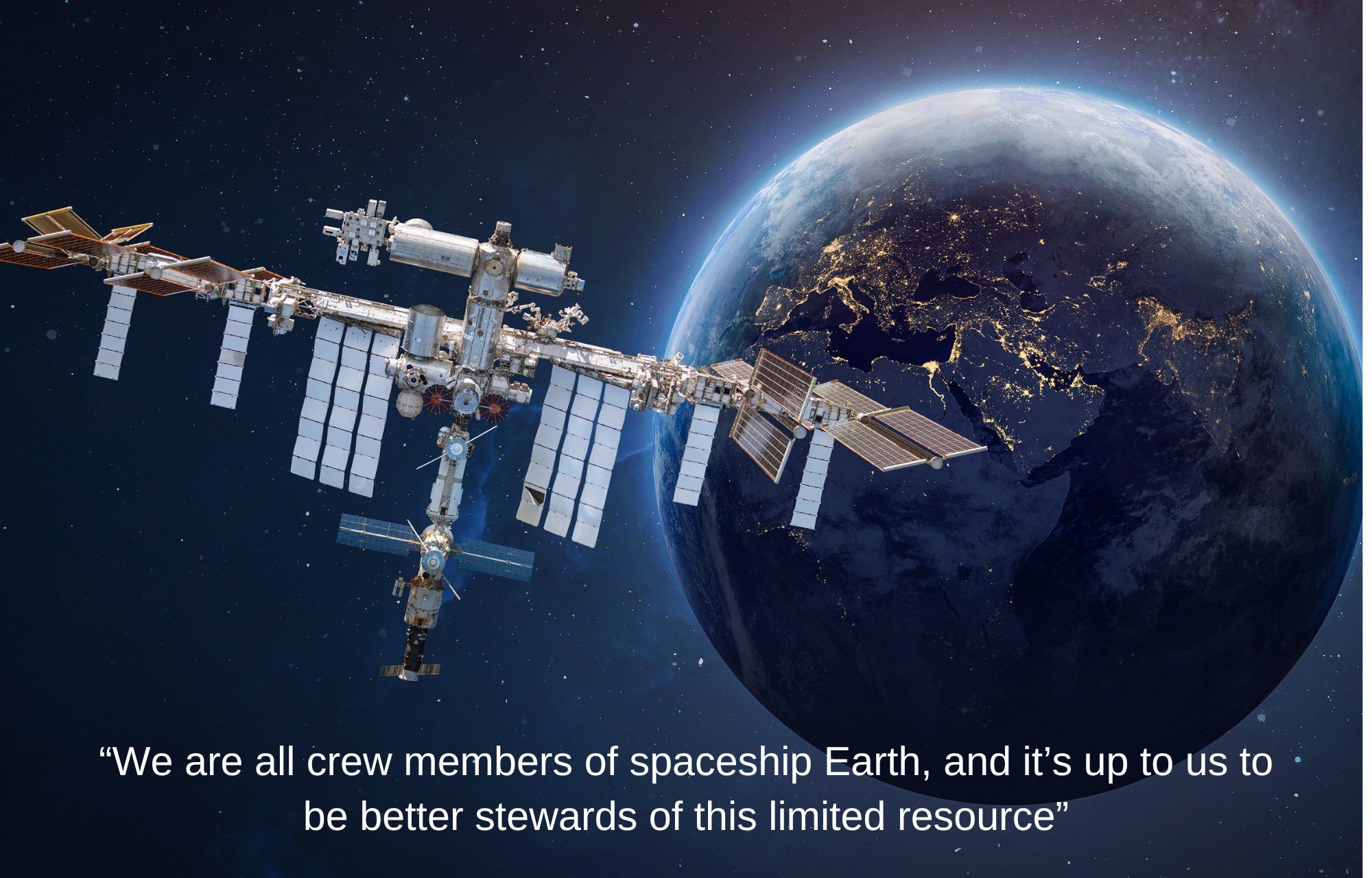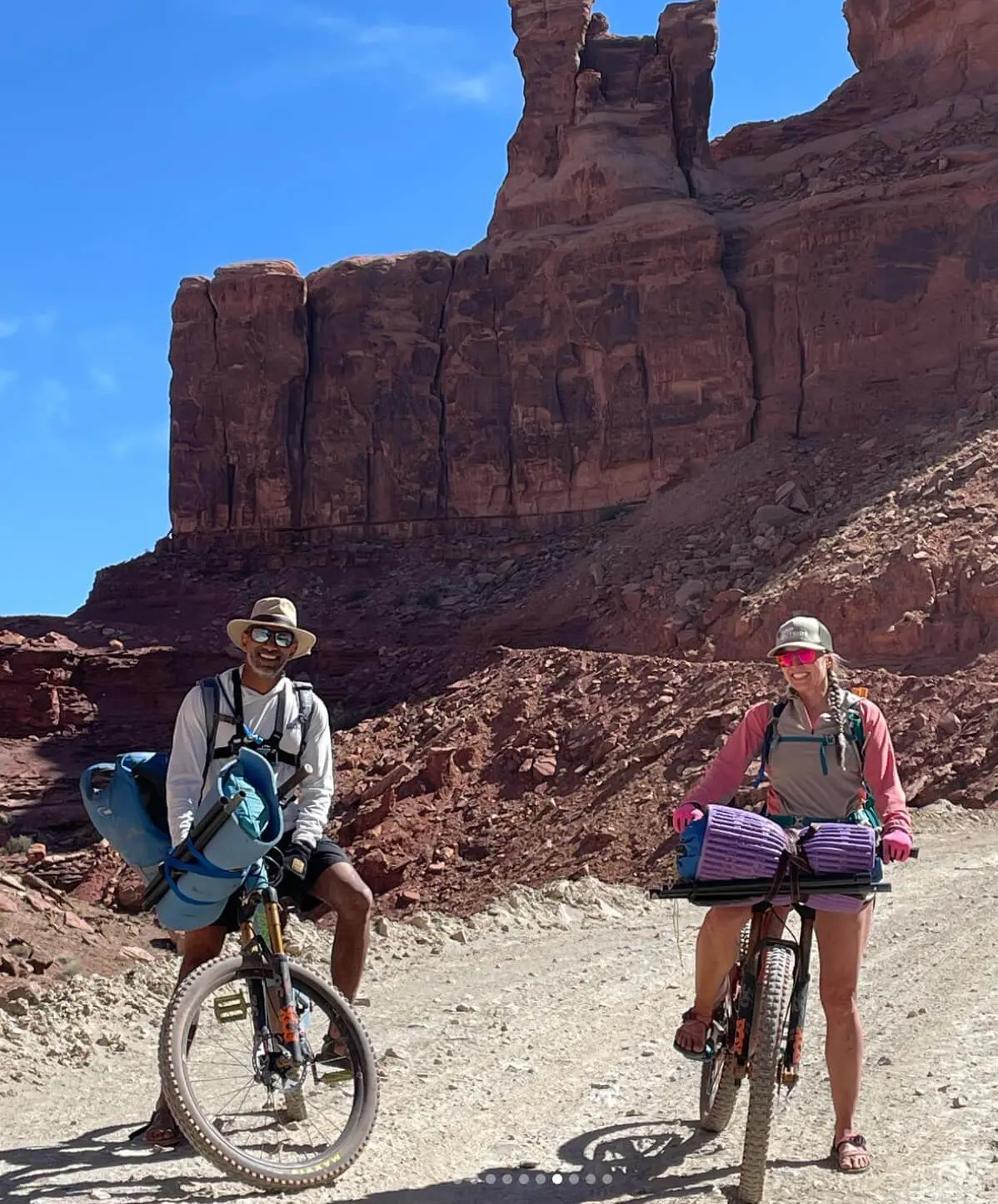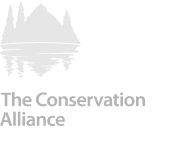Outdoor adventures are at the heart of everything we do. Whether we’re bagging peaks, paddling rivers, or shredding trails, we depend on wild spaces to fuel our passion. But these spaces are fragile, and with the growing number of outdoor enthusiasts, the responsibility to protect them has never been more important. That’s why attending the Leave No Trace (LNT) Summit was a powerful experience for me and a reminder of how critical it is to steward the places we love.
Although I won’t be able to cover every talk and all of my learnings, I want to share my notes from the conference that stuck with me.

Why the Leave No Trace Summit Matters
For over 30 years, the Leave No Trace Center for Outdoor Ethics has worked to educate and inspire people to protect the outdoors through sustainable practices. This year’s summit brought together leaders, educators, and adventurers from across the outdoor industry, each with a common goal: ensuring that we leave the land better than we found it. The summit offered more than just how-to tips for minimizing our footprint; it challenged us to dig deeper into our own personal “why” behind outdoor stewardship.
The Evolution of Leave No Trace
Dave Secunda kicked off the summit with a look back at the origins of Leave No Trace. Thirty years ago, LNT started as a simple phrase within NOLS (National Outdoor Leadership School), but it quickly became clear that this idea needed to reach beyond the bounds of any one organization. In 1994, LNT became its own nonprofit, backed by the outdoor industry and early funders like JanSport.
Dave’s personal journey in outdoor stewardship also evolved over the years. His early experiences in the wilderness were deeply personal—solo trips that left him feeling like he was the first to explore a pristine landscape. But over time, his perspective shifted. Dave realized that protecting these spaces wasn’t just about his own experience, but about ensuring they would be there for others to enjoy too. His stories about sharing secret spots with loved ones and climbing 14ers in honor of his late father reminded us all of the deeply human connections we make with the outdoors. These are the experiences worth protecting for future generations.
The key takeaway? As Dave said, “The conference will offer a lot of ‘how,’ but take some time to think about your ‘why.’” It’s this focus on our personal connection to the land that will carry LNT’s mission forward for the next 30 years.
The Growing Challenge: More People, Same Finite Land
Ben Lawhon tackled a growing challenge: the increasing number of people venturing outdoors versus the finite amount of land we have to share. He emphasized the importance of both the head (skills) and the heart (ethics) in practicing Leave No Trace. LNT is no longer just for the backcountry—it’s for your backyard, the frontcountry, and everywhere in between. Ben encouraged us to think about how we can get more people doing more LNT things more often, even if it’s not perfect. Small actions matter.
One fascinating area Ben covered was the concept of environmentally responsible behavior (ERB). Research shows that people who learn and practice LNT principles take those ethics with them wherever they go. It’s not just about wilderness—it’s about everyday life. Whether you’re on a hike, at a local park, or just going about your day, you can bring these ethics home with you.
The takeaway here is clear: We’re not making more land, but we are making more people. It’s up to us to educate and inspire more responsible outdoor behavior, not just in the wild but in every corner of our lives.

Bridging the Gap: Diversity and Inclusion in the Outdoors
Outdoor recreation should be for everyone, but we all know the gap in access and representation exists. The Diversity and Inclusion panel, moderated by Teresa Martinez, shed light on the challenges faced by underrepresented communities in accessing outdoor spaces and LNT education.
Shayna Unger, from the deaf and hard of hearing community, shared her story of feeling left out of the outdoors. Her experience traveling in Nepal highlighted the lack of inclusion for people with disabilities. But there’s hope: LNT is actively working to bridge these gaps by offering courses in American Sign Language (ASL) and creating accessible materials for different communities.
Gabaccia Moreno (executive director of Outdoorist Oath) with her indigenous background, emphasized that conservation ethics were part of her upbringing long before LNT became a formal framework. In indigenous communities, the idea of taking from the land and giving back through conservation has been central for generations. Gabaccia encouraged us to think about how our actions today will impact people seven generations from now. Her message was a powerful reminder that inclusivity in the outdoors isn’t just about access—it’s about recognizing and honoring the long-standing traditions of stewardship.
An Astronaut’s Perspective on Stewardship
One of the most impactful sessions came from an unexpected source: NASA astronaut Kjell Lindgren. Kjell’s time in space gave him a unique perspective on the fragility of our planet. From the International Space Station, he looked down at Earth and saw a beautiful, yet delicate, planet surrounded by the vast emptiness of space. He drew parallels between life on the space station—where everything is carefully managed, from oxygen to water—and life on Earth, where our resources also need careful stewardship.
Kjell’s story reminded me that, while the challenges ahead may seem overwhelming, anything is possible. Just as astronauts rely on teamwork to keep the space station functioning, we, too, need a collective effort to protect our planet. As Kjell put it, “We are all crew members of spaceship Earth, and it’s up to us to be better stewards of this limited resource.”
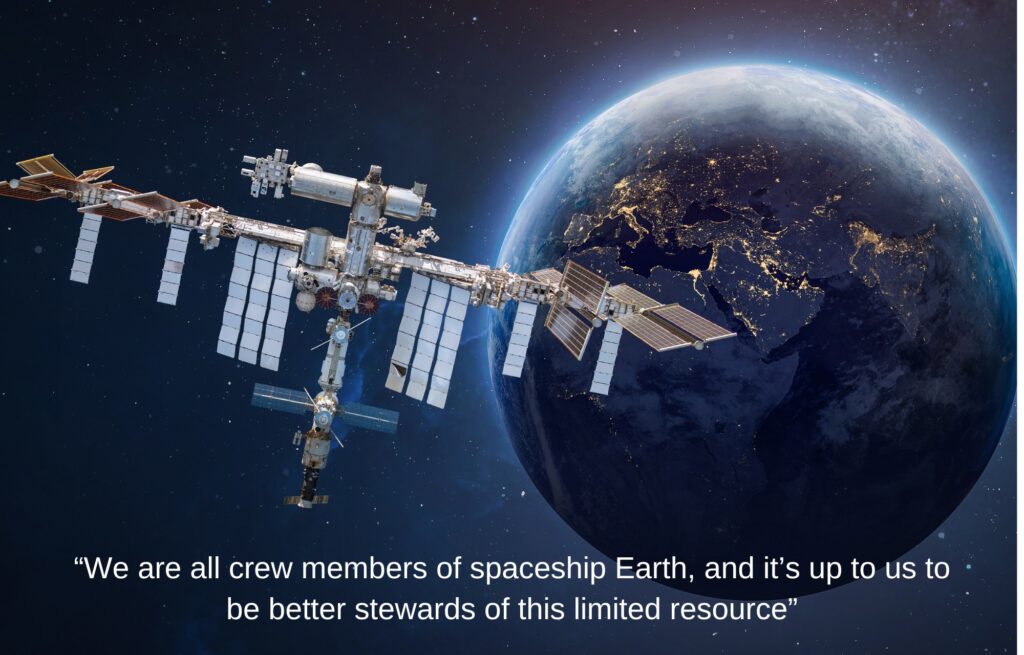
Innovative Ways to Teach Conservation
The Leave No Trace Summit wasn’t just about big ideas—it was also about practical, innovative ways to teach these principles to the next generation. Outward Bound Adventures introduced a fun, hands-on method for teaching LNT principles using simple gestures. For example, the gesture for “leave what you find” involves forming a camera with your fingers to remind you to take only pictures, not objects. These interactive techniques help make LNT concepts stick with younger audiences, ensuring that the message reaches future generations.
In West Virginia, the Department of Tourism is working with schools to provide LNT education to all 5th graders and have educated over 1500 kids! This early education approach is key to creating a culture of conservation from a young age.
Outdoor recreation is a key part of the resources in West Virginia. It’s the 3rd most forested state and has the greatest density of white water. The state saw $8.7 billion in economic impact from tourism in 2023 and is growing faster than the national average. 7% of the state jobs are in tourism with 21k vacancies each year. By educating on Leave No Trace, they’re also able to spread the awareness of the economic and career opportunities from outdoor recreation in the state.
Managing Human Waste in High-Use Areas
Shari Edelson’s talk on managing human waste in high-traffic areas might have been one of the most entertaining sessions of the summit. While it’s not always a polite topic, human waste is a major issue in popular outdoor spots like Colorado’s 14ers. Shari’s humorous, engaging approach made it clear that we need to tackle this problem head-on. Consolidating campsites in high-use areas, opting for durable surfaces, and going without campfires are just a few strategies to reduce the impact.
Pro tip: Grab a wag bag, know how to use it, and throw some in your hiking packs. You never know when you’ll need it and when you do, you’ll be prepared.
Partnerships for a Sustainable Future
The final session explored how partnerships between tourism, corporations, and conservation groups can help spread LNT principles to new audiences. Ross Borden, CEO of Matador Networks, shared how they partnered with LNT to wrap tourism marketing campaigns in conservation messaging. By working with destinations like New Zealand and Costa Rica, Matador helped educate tourists on the fragility of these ecosystems and encouraged responsible travel.
State agencies, like Arizona’s Department of Tourism, are also stepping up to incorporate LNT into their messaging. Through partnerships with local organizations, they’re ensuring that tourism in the state remains sustainable while protecting public lands.
Raj Basi, Vice President of Sustainability at Powdr, shared that their key reason for supporting LNT is that the organization is based in data and science. For collaborations, he highlights that education and collaboration are key to scaling impact. They work with other ski resort partners, even competitors and make their sustainability education open source. He suggests that partnering with like-minded organizations, we can create meaningful, lasting change in outdoor stewardship.
I truly enjoyed connecting with outdoor companies and nonprofits during the Leave No Trace Summit. The passion and commitment from so many organizations to protect our natural spaces was inspiring.
- Sawyer water filters gives away 90% of their profits away to provide clean water to communities
- BearVault: Containers that protect your food from wildlife, in turn keeping wildlife safe.
- Powdr: The company behind epic ski resorts like Snowbird, Mt Bachelor and more. Their Play Forever foundation’s mission of protecting the environment and supporting the community truly resonated with us.
- And of course, all of the supporters of the conference that you can find here like Fjallraven, Keen, Alltrails, Mountain Hardware, Travelability, and more.
I was also stoked to meet up with Mirrorman, one of our fellow volunteers and the founder of the camp Earth Guardians at Burning Man. We volunteer with the Earth Guardians to spread LNT awareness at Black Rock City.
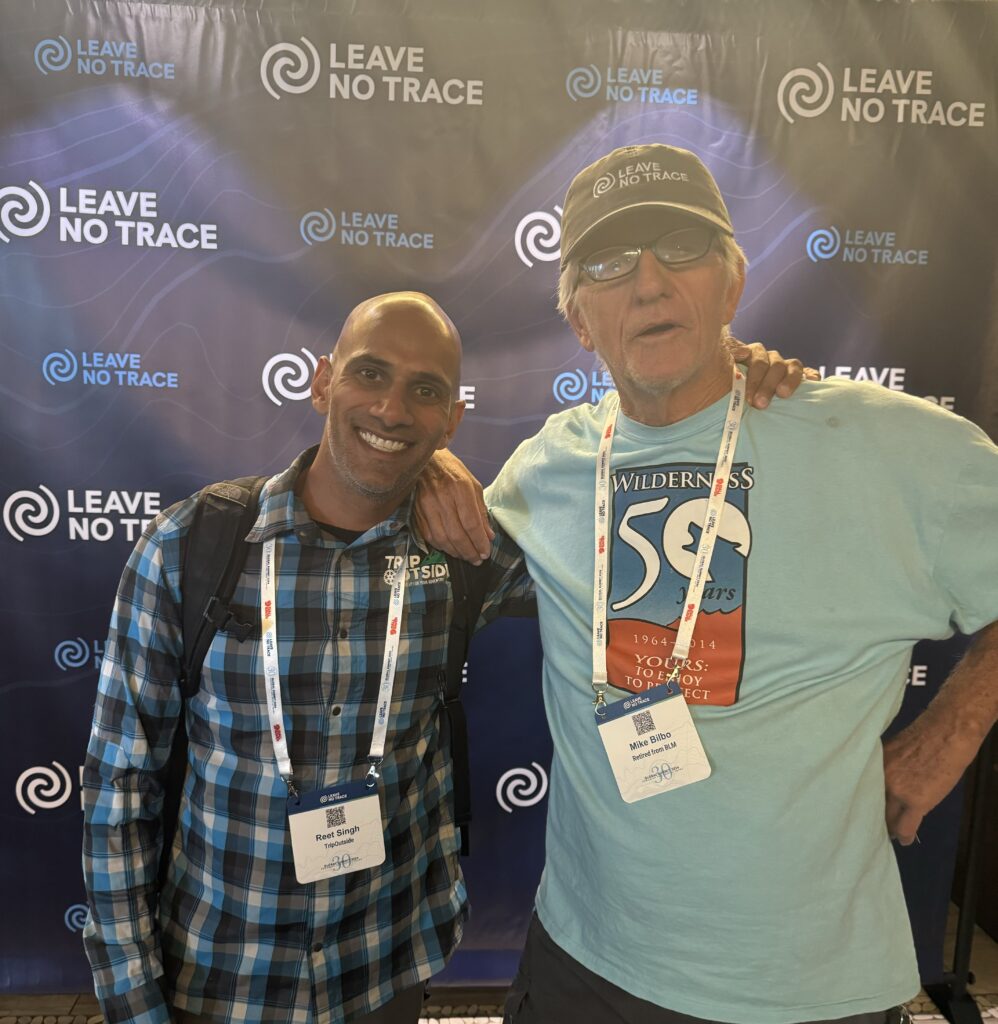
Moving Forward: Your Role in Leave No Trace
As Dave Secunda reminded us, the next 30 years of Leave No Trace depend on us finding our personal “why” and carrying it forward. Whether you’re hiking, biking, paddling, or climbing, Leave No Trace is about more than just the outdoors—it’s about being a responsible human, no matter where you are. We can all take small steps to ensure that these beautiful spaces are around for generations to come.
At TripOutside, we’re committed to promoting outdoor ethics through our adventures, and we encourage you to join us in this mission. Let’s leave the outdoors better than we found them—because the best adventure is one that protects the places we love.

